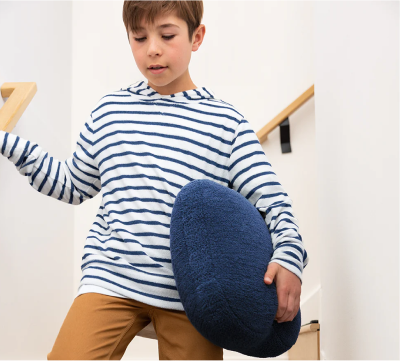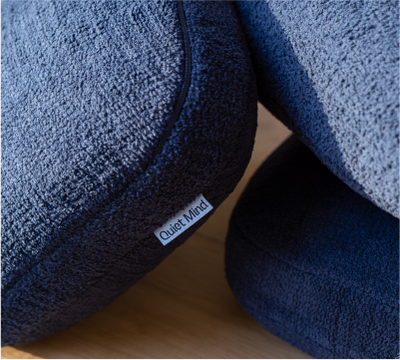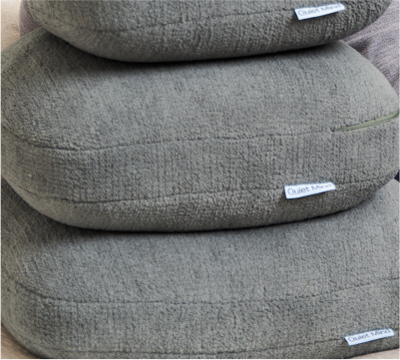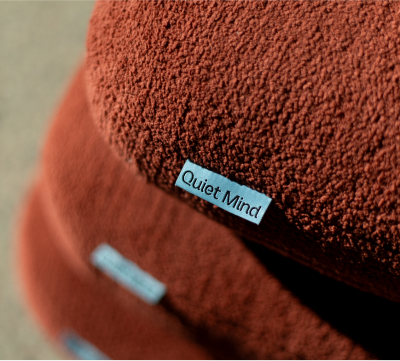ADHD doesn’t always look the way people expect. For some, it’s scattered thoughts. For others, it’s constant movement, restlessness, or difficulty finishing what they start. If you’re wondering what type of ADHD you have, you’re not alone and there’s a reason it feels nuanced.
Understanding your ADHD subtype offers more than a label. It’s a way of seeing how your brain works and what supports it best. For many adults with ADHD, especially those diagnosed with ADHD later in life, learning their type brings relief, clarity, and self-compassion. It can also guide more effective strategies and support.
Understanding ADHD and Its Different Types
ADHD, or Attention Deficit Hyperactivity Disorder, is not a one-size-fits-all condition. It reflects a spectrum of attentional, emotional, and behavioral differences rooted in how the brain manages focus, energy, and self-regulation.
There are three primary types of ADHD, and each presents its own blend of strengths and challenges:
-
Predominantly Inattentive Type (formerly known as ADD): Marked by difficulty sustaining attention, forgetfulness, disorganization, and mental drifting. Often missed in children and adults with ADHD who appear quiet or “daydreamy.”
-
Predominantly Hyperactive-Impulsive Type: Characterized by restlessness, impulsivity, fidgeting, and a strong drive to move or speak. More commonly identified in children, especially adolescents, but can evolve with age.
- Combined Type ADHD: Involves both symptoms of inattention and hyperactivity and impulsivity. This is the most commonly diagnosed ADHD subtype and can be the most complex to manage without support.
ADHD Core Symptoms and Diagnosis
To diagnose ADHD, mental health professionals evaluate both current challenges and lifelong patterns. Diagnosis isn’t based on a single test, it’s a thoughtful, clinical process that includes:
- A detailed symptom history.
- Clinical interviews with you (and sometimes family or caregivers).
- Behavioral rating scales to assess symptom intensity and consistency.
- Rule-outs for other health conditions that may mimic ADHD.
ADHD shows up differently for everyone, but these core patterns form the foundation of how it's identified and understood.
1. Inattention
Often experienced as mental drifting, disorganization, or difficulty with follow-through. Examples include:
- Trouble sustaining attention on tasks or conversations
- Frequently losing things like keys, papers, or phones
- Disorganization and poor time management
- Forgetfulness or frequent daydreaming
- Struggling to complete tasks, even with clear intentions
2. Hyperactivity and Impulsivity
This includes both physical restlessness and difficulty regulating behavior or speech. Signs may include:
- Fidgeting, tapping, or trouble staying seated.
- Talking excessively or blurting out answers.
- Feeling impatient, interrupting others.
- Acting on impulses without pausing to consider outcomes.
3. Executive Function Challenges (often overlooked but deeply impactful)
These are not officially listed in the DSM, but they show up in nearly every ADHD profile:
- Difficulty starting tasks (even important ones)
- Trouble breaking tasks into steps or prioritizing
- Poor working memory (e.g., losing your train of thought mid-conversation)
- Trouble with planning, long-term organization, and follow-through
- Emotional dysregulation (quick frustration, low tolerance for stress)
Diagnostic Criteria
To meet the formal criteria for ADHD, these symptoms must:
- Be present for at least six months.
- Interfere meaningfully with everyday functioning (in work, school, or relationships).
- Occur in multiple settings, such as both at home and at work, not isolated to one environment.
Adult ADHD: How Symptoms May Shift
In adults with ADHD, symptoms often show up differently than they do in children.
- Hyperactivity may present as internal restlessness or racing thoughts.
- Inattention might look like missed deadlines, procrastination, or chronic overwhelm.
- Many adults report mental fatigue or task paralysis, especially under stress or sensory overload.
The Role of Executive Function in ADHD
At the core of ADHD is a challenge with executive function, the brain’s self-management system. These skills help you plan, prioritize, start tasks, and stay emotionally regulated.
Executive function includes:
- Organizing and sequencing thoughts.
- Initiating and completing tasks.
- Managing time and transitions.
- Regulating emotions and impulses.
For many people diagnosed with ADHD, executive dysfunction is the most disruptive part of day-to-day life. It can feel like your mind knows what to do, but your body won’t follow through. You might struggle with procrastination, forget what you just read, or feel paralyzed by multi-step tasks.
Importantly, executive dysfunction isn’t a character flaw. It’s a neurological difference, one that becomes more noticeable under stress, sensory overload, or emotional fatigue.
Predominantly Inattentive Type ADHD (Formerly ADD)
Inattentive ADHD is quieter. It’s not always visible, but it’s deeply felt.
For many, especially women and adolescents, this type of ADHD flies under the radar. Without outward hyperactivity, these individuals may be labeled shy, lazy, or unmotivated. When in reality, they’re working hard to stay afloat.
Symptoms of Inattentive ADHD in Adults and Children
Children may:
- Overlook small details or make frequent "careless" mistakes.
- Forget homework or leave belongings behind.
- Appear disengaged or slow to process instructions.
Adults may:
- Misplace items like keys, wallets, or documents regularly.
- Feel mentally foggy, especially during long conversations or meetings.
- Struggle with starting or finishing everyday tasks.
- Zone out or become overwhelmed by stimuli in busy environments.
Because these symptoms are internal and non-disruptive, people with this subtype are often misunderstood. Their challenges are real but less likely to be acknowledged without intentional assessment.
Example: Sarah, a 34-year-old project coordinator, often zones out in meetings and misplaces important documents. She’s seen as quiet and disorganized, but few realize how hard she’s working just to stay focused. Without hyperactivity, her ADHD went unnoticed for years.
Predominantly Hyperactive-Impulsive Type ADHD
This form of ADHD centers on movement, energy, and immediacy; a need to act, speak, or shift gears quickly. It's the most outwardly visible subtype, especially in younger individuals, but it can persist in adults as well.
People with this type often feel like their body is always “on.” They may talk fast, move quickly, or struggle with tasks that require stillness and sustained attention. The drive to move or react can be both a source of strength and a source of friction in daily life.
Key Signs of Hyperactive-Impulsive ADHD
- Fidgeting, tapping, or pacing even when expected to be still.
- Talking excessively or interrupting conversations.
- Restlessness in quiet settings like meetings, classrooms, or meals.
- Acting on urges without thinking through consequences.
- Difficulty waiting turns or standing in lines.
In children and adolescents, this often looks like climbing, running, or speaking out of turn. In adults with ADHD, the hyperactivity may shift into internal restlessness, feeling antsy, overwhelmed by inactivity, or driven to multitask constantly.
How It Affects Behavior, Energy, and Focus
People with this type may start many tasks but finish few. They might interrupt without meaning to, or move too quickly through decisions.
Waiting can feel physically uncomfortable. Over time, these patterns may impact relationships, work performance, and self-esteem. Especially when misunderstood as impulsivity or lack of discipline.
Support strategies often include structured movement, sensory regulation tools, and learning to build relaxation into daily routines, not as a luxury, but as essential nervous system care.
Example: Jared, a 28-year-old designer, struggles to sit through meetings without tapping his feet or interrupting. His thoughts come fast, and so do his words. While his energy helps him think on his feet, it also makes it hard to slow down or wait his turn.
ADHD Combined Type: Signs, Traits, and Challenges
Combined type ADHD is marked by both symptoms of inattention and hyperactivity and impulsivity. It’s the most commonly diagnosed subtype and often the most misunderstood.
This type includes the internal distractions of inattentive ADHD and the outward signs of hyperactive or impulsive behavior. People with this subtype often feel pulled in many directions at once scattered mentally, and restless physically.
When Inattention and Hyperactivity Overlap
People with combined type may:
- Lose track of thoughts mid-task but also feel the need to move constantly.
- Forget important details but also interrupt conversations without meaning to.
- Feel overwhelmed by long to-do lists, yet impulsively start new tasks without finishing others.
This duality can feel like living with two different brains at once. It can create a cycle of frustration, especially when others misread it as carelessness or inconsistency.
Common Behaviors in Combined Type ADHD
- Fidgeting, tapping, or shifting constantly.
- Avoidance of sustained attention tasks (like paperwork or email).
- Disorganization and chronic time blindness.
- Blurting or speaking over others.
- Mental and physical restlessness throughout the day.
People with combined type often struggle in traditional environments like classrooms or offices. They may feel like they're "too much" and "not enough" at the same time.
Recognizing this overlap is crucial not just for treatment, but for self-understanding and emotional validation.
Example: Monica, a 42-year-old small business owner, starts projects enthusiastically but often abandons them halfway. She feels both mentally scattered and physically restless, pulled in two directions at once. It's a daily challenge to stay grounded and finish what she begins.
ADHD Symptoms That Overlap Between Types
While each ADHD subtype has distinct features, many symptoms cross over. You might be mostly inattentive but also restless in certain settings or highly active but struggle to complete tasks. This overlap is especially common in individuals with high-functioning ADHD, who may appear outwardly capable while still battling intense internal challenges.
Common Traits Shared by All ADHD Types
- Time management difficulties
- Disorganization or frequent forgetfulness
- Impulsive decision-making or speech
- Avoidance of repetitive or detail-heavy tasks
- Sensory overwhelm or emotional dysregulation
|
Feature / Symptom |
Inattentive Type |
Hyperactive-Impulsive Type |
Combined Type |
|
Core Challenges |
Focus, follow-through, organization |
Impulse control, restlessness, overactivity |
Both attention and impulse regulation |
|
Common in |
Women, adults, later-diagnosed individuals |
Children, especially boys |
Most frequently diagnosed across all ages |
|
Outward Signs |
Zoning out, forgetfulness, mental fatigue |
Fidgeting, interrupting, impulsive actions |
Fluctuates between internal and external |
|
Strengths |
Creative, observant, independent thinkers |
Energetic, spontaneous, quick responders |
Adaptive, intuitive, multitaskers |
How Overlap Affects Diagnosis and Treatment
Overlapping traits make ADHD especially hard to diagnose in adults, particularly those with high-functioning ADHD. These individuals often develop sophisticated coping mechanisms that mask or compensate for their struggles.
Diagnosis should never rely on a symptom checklist alone. A thoughtful assessment will look at context: how your challenges show up across work, school, relationships, and emotional health.
Can ADHD Types Change Over Time?
Yes, ADHD can evolve throughout your life. It’s not uncommon for someone who was once visibly hyperactive as a child to appear quieter or more inwardly distracted as an adult.
Symptoms don’t vanish, they shift. And how they show up may depend on your environment, responsibilities, or co-occurring health conditions like anxiety and depression.
How ADHD Symptoms Shift from Childhood to Adulthood.
ADHD doesn’t disappear with age but it evolves, often in subtler but equally disruptive ways.
- Hyperactivity may become internal restlessness or over-scheduling.
- Impulsivity may turn into frequent frustration or difficulty pausing.
- Inattention can persist, and often worsens with adult demands like parenting, work, or caregiving.
Re-Evaluating Your ADHD Type Over Time
Your current ADHD experience may not match how it looked at age 7. That's okay. Life stages like puberty, early career, parenthood, menopause, or major transitions can all shift your symptom expression.
Consider:
- Keeping a symptom journal to track changes.
- Reassessing your diagnosis every few years.
- Updating your strategies as your brain and life evolve.
There is no shame in needing new tools or support as your needs change.
How to Know What Type of ADHD You Have
The best way to know your ADHD type is to get a formal evaluation from a qualified professional; typically a psychologist, psychiatrist, or neurologist. They will assess your symptoms across different domains, rule out other conditions, and determine whether you have inattentive, hyperactive-impulsive, or combined type ADHD.
While online quizzes and self-reflection can offer helpful clues, they aren’t definitive. This is especially important because ADHD often overlaps with other mental health conditions like anxiety, depression, or learning disorders.
Knowing your ADHD type isn’t about fitting into a box. It’s about understanding how your brain navigates focus, energy, and attention. This awareness can guide meaningful support strategies and reduce the shame that often surrounds misunderstood behaviors.
ADHD Assessments and Diagnostic Tools
The process to determine your ADHD type usually includes:
- Clinical interviews: Your provider will ask about your life history, daily challenges, school and work functioning, and emotional health.
- Rating scales: These standardized forms measure the severity and frequency of symptoms across inattention, hyperactivity, and impulsivity.
- Cognitive tests: Some providers use tools to evaluate working memory, attention span, and processing speed, which are key aspects of executive function.
-
Medical history and screening: You’ll likely be asked about other health conditions, medications, or family history of ADHD or related traits.
|
Tool |
Purpose |
|
Clinical Interview |
Understand personal patterns, history, and functional impact |
|
Rating Scales |
Quantify how often behaviors occur across environments |
|
Cognitive Testing |
Explore executive function and processing strengths/needs |
It’s also important to consider common comorbidities; like anxiety, depression, or learning differences, which can overlap with ADHD symptoms and impact diagnosis or treatment. For example, emotional dysregulation linked to anxiety might amplify impulsive behavior, or depressive fatigue may resemble inattentiveness.
A comprehensive assessment helps distinguish these patterns and ensures you get support that addresses the full picture of your mental health.
Talking to a Doctor or Mental Health Professional
Initiating the conversation can feel vulnerable, especially if you've spent years masking or doubting your own experience. But your story matters. And clear communication with your provider can open the door to meaningful, affirming support.
Here are some tips for a productive evaluation:
- Describe what daily life feels like, not just symptoms on a list. For example: “I start tasks and lose track halfway,” or “I’m constantly overwhelmed by small decisions.”
- Mention changes over time, especially if you were a hyperactive adolescent who now struggles more with focus or fatigue. It's not uncommon for ADHD to get worse with age, particularly as life responsibilities increase and coping mechanisms get stretched.
- Bring notes or examples, especially if your symptoms fluctuate based on stress, environment, or sensory input.
- Ask about your subtype: You might say, “Do these patterns reflect inattentive, hyperactive-impulsive, or combined type?”
Why Knowing Your ADHD Type Matters
Understanding your ADHD type is more than just naming a pattern, it’s about making sense of your experience. It’s a way to reframe old frustrations through the lens of brain-based differences, not personal shortcomings.
Knowing whether you tend toward symptoms of inattention, hyperactivity and impulsivity, or both can help you:
- Choose tools and therapies that match how your brain works.
- Advocate for yourself in work, school, or relationships.
- Build routines that feel sustainable, not forced.
- Release shame or confusion around past struggles.
This awareness can be especially powerful for adults with ADHD, many of whom were diagnosed with ADHD later in life or misdiagnosed entirely during adolescence. For them, understanding their subtype often brings a sense of clarity, closure, and new possibility.
ADHD is not a character flaw. Knowing your type simply gives you a more accurate map for the road ahead.
Tailoring Treatment and Support Strategies
Once your ADHD type is identified, your care can shift from trial-and-error to tailored. Instead of trying to “fix” your focus or force routines that don’t fit, you can choose strategies that align with how your nervous system naturally operates.
|
ADHD Type |
Focus Area |
Support Tools |
|
Inattentive |
Mental clarity and follow-through |
Visual cues, timers, body doubling, structured quiet time |
|
Hyperactive-Impulsive |
Self-regulation and movement |
Movement breaks, calming tools, impulse-tracking strategies |
|
Combined |
Balancing focus and flexibility |
Blended structure, rest intervals, and adaptive routines |
True support isn’t just about minimizing symptoms, it’s about creating space where your strengths can thrive.
Understanding Your Strengths and Triggers
People with ADHD are often intuitive, energetic, and idea-rich. Many excel in high-pressure or creative roles, where quick thinking is an asset. But even strengths can turn into stress when conditions are mismatched.
By understanding your subtype, you can better identify:
- Which environments drain you (e.g., loud open offices or rigid schedules).
- Which supports nourish you (e.g., breaks for movement, sensory aids, external structure).
- How to self-regulate during overwhelm or shutdown.
Your brain is not broken, it’s responsive. Creating the right conditions allows your focus, creativity, and energy to work for you, not against you.
Treatment Options Based on ADHD Subtype
There’s no single “fix” for ADHD. But with the right approach, many people experience dramatic improvements in their focus, confidence, and emotional wellbeing.
Medication, Therapy, and Lifestyle Adjustments
- Stimulant medications (like methylphenidate or amphetamine-based options) can support dopamine regulation and improve executive function.
- Therapy, particularly CBT or ADHD-specific coaching, helps you build habits, manage emotions, and challenge negative self-talk.
- Lifestyle strategies matter too. Regular exercise, mindful routines, and tools like a weighted pillow may help ease restlessness and support nervous system balance.
These elements are key to the management of ADHD, offering ways to support your brain. These options aren’t exclusive. Often, a layered approach; medical, behavioral, and environmental is most effective.
Different Approaches for Each Type of ADHD
Understanding your type helps tailor support to your day-to-day life, not just your diagnosis.
|
Subtype |
Primary Focus |
Helpful Additions |
|
Inattentive |
Boosting attention and reducing overwhelm |
Task breakdowns, white noise, visual lists, self-compassion |
|
Hyperactive-Impulsive |
Channeling energy and slowing responses |
Active routines, grounding tools, movement-integrated schedules |
|
Combined |
Blending focus and calm |
Flexible structure, breaks for movement, sensory modulation |
There is no “right” way to live with ADHD. But there is a right way for you and discovering that starts with knowing what kind of support feels intuitive, not forced.
How Coaches, Support Groups, and Apps Can Help
Support doesn’t always have to come from doctors. Many people with ADHD benefit from community, structure, and digital tools that make daily routines more manageable.
- ADHD coaches help with accountability, task initiation, and time management.
- Support groups offer validation and a sense of shared experience, something many adults didn’t have growing up.
- Apps like Todoist (task lists), Notion (visual planning), or Forest (focus timers) can help reduce mental clutter and improve follow-through.
Support doesn’t mean weakness. It means you’re working with your brain, not against it.
Final Thoughts on Identifying Your ADHD Type
Understanding your ADHD type is not about limiting who you are. It’s about meeting yourself with honesty, curiosity, and care.
When you know your type, you start to see patterns, not problems. You recognize that the friction isn’t failure, it’s feedback. And that feedback can guide you toward strategies, systems, and environments where your brain feels seen, supported, and safe.
Whether you’ve known for years or are just beginning to explore what it means to have ADHD as an adult, your story is valid. You are not alone. And there are real, meaningful ways to move forward with clarity, structure, and self-trust.
About Quiet Mind
Quiet Mind offers calm, evidence-informed resources for adults and adolescents navigating ADHD, emotional regulation, and sensory overwhelm. We focus on self-awareness, nervous system support, and practical strategies that meet you where you are.
One of our most trusted tools is the Quiet Mind Weighted Pillow, designed to provide calming pressure that supports focus, eases restlessness, and helps regulate the nervous system.
Whether you're working, resting, or resetting between tasks, this small but powerful aid offers grounded support for people with ADHD and sensory sensitivity.
Frequently Asked Questions
What is the role of executive function in ADHD?
Executive dysfunction underlies many ADHD challenges including planning, memory, and self-regulation.
How can I determine my ADHD type?
You can understand your ADHD type by working with a qualified clinician who can evaluate your patterns using established tools.
What treatment options are available for ADHD?
Medication, therapy, coaching, lifestyle adjustments, and supportive tools are some great options for treating ADHD.
Can lifestyle changes help manage ADHD symptoms?
Yes, lifestyle changes play a big part in managing ADHD symptoms. Movement, routine, mindfulness, and sleep support are crucial to living better with ADHD.
How can I find a healthcare professional to diagnose and treat my ADHD?
To diagnose and treat your ADHD, start with your primary care provider or seek referrals through trusted mental health networks and ADHD organizations.

















